My Facebook page and blog focus on the joys and challenges of backyard chicken-keeping and I am often asked questions on topics ranging from Ameraucana traits to molting and bumblefoot to poop. Many questions I am able to answer from personal experience and others I research in order to answer if I can. I was asked by Storey Publishing to review Gail Damerow’s latest book, The Chicken Encyclopedia, and to my surprise and delight, it has become an invaluable resource, most recently in answering my own questions about rooster fertility.
The practical implications of this book were first impressed upon me by two unlikely suspects: my Black Copper Marans (BCM) rooster, Max and my 4 year old daughter.
Max came to me from Louden Farms in Ohio as a fertilized egg early last July. He was my broody hen’s sole hatchling and she helped him integrate seamlessly into the flock. I quickly became fond of this awkward singleton, but before long, it became apparent that he was a rooster, and I could not keep roosters. I knew he would have to go, but I could not resist the temptation to keep him long enough to breed him to my Marans hens.
Having Marans hens that were laying consistently dark, chocolate eggs that would make the Easter Bunny envious, I was anxious for Max to mature in order to breed. I had no idea how I would keep him without alienating my neighbors, but I had to try, at least for a little while.*
When Max began mating with the ladies in October, I regularly checked the BCM eggs for fertility and by mid-November, it was game time. In December, I greedily began hoarding and hatching BCM eggs as quickly as my incubators would turn them into fluffy cuteness, for I knew spring would soon be upon us and that open windows + vocal rooster=cranky neighbors. Max’s days were numbered.
In early February, an elaborate plan evolved to return Max to his homeland, Louden Farms, some 576 miles away from us. It involved two days, three states, three cars and a limousine. Saddened at the thought of parting with my beautiful flock-master, I began sharing photos of Max and his impending trip with my Facebook fans, which prompted questions about when my chocolate egg well might run dry. Turning to “Fertility,” in The Chicken Encyclopedia, I learned that:
“When a hen is inseminated, sperm travel quickly up the oviduct to fertilize a developing yolk. If the hen laid an egg shortly before, the mating will likely fertilize her next egg. The number of additional eggs that will be fertilized by the mating varies with the hen’s productivity and breed. The average duration of fertility is about 10 days. Highly productive hens remain fertile longer than hens that lay at a slower rate, and single-comb breeds remain fertile longer than rose-comb breeds — possibly as long as a month, but that’s pushing it.”
Being a hatch-a-holic, I obviously had to test the waters to see how long the Fab Five would continue to produce fertile eggs in Max’s absence. After Max’s move, I continued to collect the Marans’ eggs and hold them until an incubator became available. Little did I know that my 4 year old had her own ideas about testing those same eggs. While I was out at the coop one morning, my daughter, MaryKate, decided to try her hand at the fine art of egg cracking. After having seen the pride in MaryKate’s face at her accomplishment, it was impossible to be upset about it.
I inspected the semi-scrambled eggs, which revealed that the eggs were not fertile. I do admit to having lost count of the number of Max’s chicks that hatched over the past month since his departure, that’s one of the symptoms of being a hatch-a-holic, but I do know that the very last egg in the incubator hatched tonight and it was from an egg that was collected 12 days after Max was last with the hens. He must have read the book.
I am honored to have been asked to participate in the blog tour, book-review of The Chicken Encyclopedia, Gail Damerow is a well-known and highly respected and prolific author of such works as: Storey’s Guide to Raising Chickens and The Chicken Health Handbook, both of which had been on my bookshelf long before a chicken ever stepped foot into my backyard. I encourage anyone with pet chickens to acquire this book as soon as possible. It is that valuable a resource.
*Max was carried into his ManCave (aka: rabbit hutch) in the garage every night for months and returned to his adoring harem after the neighbors left for work each morning.
Kathy Shea Mormino
Affectionately known internationally as The Chicken Chick®, Kathy Shea Mormino shares a fun-loving, informative style to raising backyard chickens. …Read on


shop my SPONSORS
My Facebook page and blog focus on the joys and challenges of backyard chicken-keeping and I am often asked questions on topics ranging from Ameraucana traits to molting and bumblefoot to poop. Many questions I am able to answer from personal experience and others I research in order to answer if I can. I was asked by Storey Publishing to review Gail Damerow’s latest book, The Chicken Encyclopedia, and to my surprise and delight, it has become an invaluable resource, most recently in answering my own questions about rooster fertility.
The practical implications of this book were first impressed upon me by two unlikely suspects: my Black Copper Marans (BCM) rooster, Max and my 4 year old daughter.
Max came to me from Louden Farms in Ohio as a fertilized egg early last July. He was my broody hen’s sole hatchling and she helped him integrate seamlessly into the flock. I quickly became fond of this awkward singleton, but before long, it became apparent that he was a rooster, and I could not keep roosters. I knew he would have to go, but I could not resist the temptation to keep him long enough to breed him to my Marans hens.
Having Marans hens that were laying consistently dark, chocolate eggs that would make the Easter Bunny envious, I was anxious for Max to mature in order to breed. I had no idea how I would keep him without alienating my neighbors, but I had to try, at least for a little while.*
When Max began mating with the ladies in October, I regularly checked the BCM eggs for fertility and by mid-November, it was game time. In December, I greedily began hoarding and hatching BCM eggs as quickly as my incubators would turn them into fluffy cuteness, for I knew spring would soon be upon us and that open windows + vocal rooster=cranky neighbors. Max’s days were numbered.
In early February, an elaborate plan evolved to return Max to his homeland, Louden Farms, some 576 miles away from us. It involved two days, three states, three cars and a limousine. Saddened at the thought of parting with my beautiful flock-master, I began sharing photos of Max and his impending trip with my Facebook fans, which prompted questions about when my chocolate egg well might run dry. Turning to “Fertility,” in The Chicken Encyclopedia, I learned that:
“When a hen is inseminated, sperm travel quickly up the oviduct to fertilize a developing yolk. If the hen laid an egg shortly before, the mating will likely fertilize her next egg. The number of additional eggs that will be fertilized by the mating varies with the hen’s productivity and breed. The average duration of fertility is about 10 days. Highly productive hens remain fertile longer than hens that lay at a slower rate, and single-comb breeds remain fertile longer than rose-comb breeds — possibly as long as a month, but that’s pushing it.”
Being a hatch-a-holic, I obviously had to test the waters to see how long the Fab Five would continue to produce fertile eggs in Max’s absence. After Max’s move, I continued to collect the Marans’ eggs and hold them until an incubator became available. Little did I know that my 4 year old had her own ideas about testing those same eggs. While I was out at the coop one morning, my daughter, MaryKate, decided to try her hand at the fine art of egg cracking. After having seen the pride in MaryKate’s face at her accomplishment, it was impossible to be upset about it.
I inspected the semi-scrambled eggs, which revealed that the eggs were not fertile. I do admit to having lost count of the number of Max’s chicks that hatched over the past month since his departure, that’s one of the symptoms of being a hatch-a-holic, but I do know that the very last egg in the incubator hatched tonight and it was from an egg that was collected 12 days after Max was last with the hens. He must have read the book.
I am honored to have been asked to participate in the blog tour, book-review of The Chicken Encyclopedia, Gail Damerow is a well-known and highly respected and prolific author of such works as: Storey’s Guide to Raising Chickens and The Chicken Health Handbook, both of which had been on my bookshelf long before a chicken ever stepped foot into my backyard. I encourage anyone with pet chickens to acquire this book as soon as possible. It is that valuable a resource.
*Max was carried into his ManCave (aka: rabbit hutch) in the garage every night for months and returned to his adoring harem after the neighbors left for work each morning.



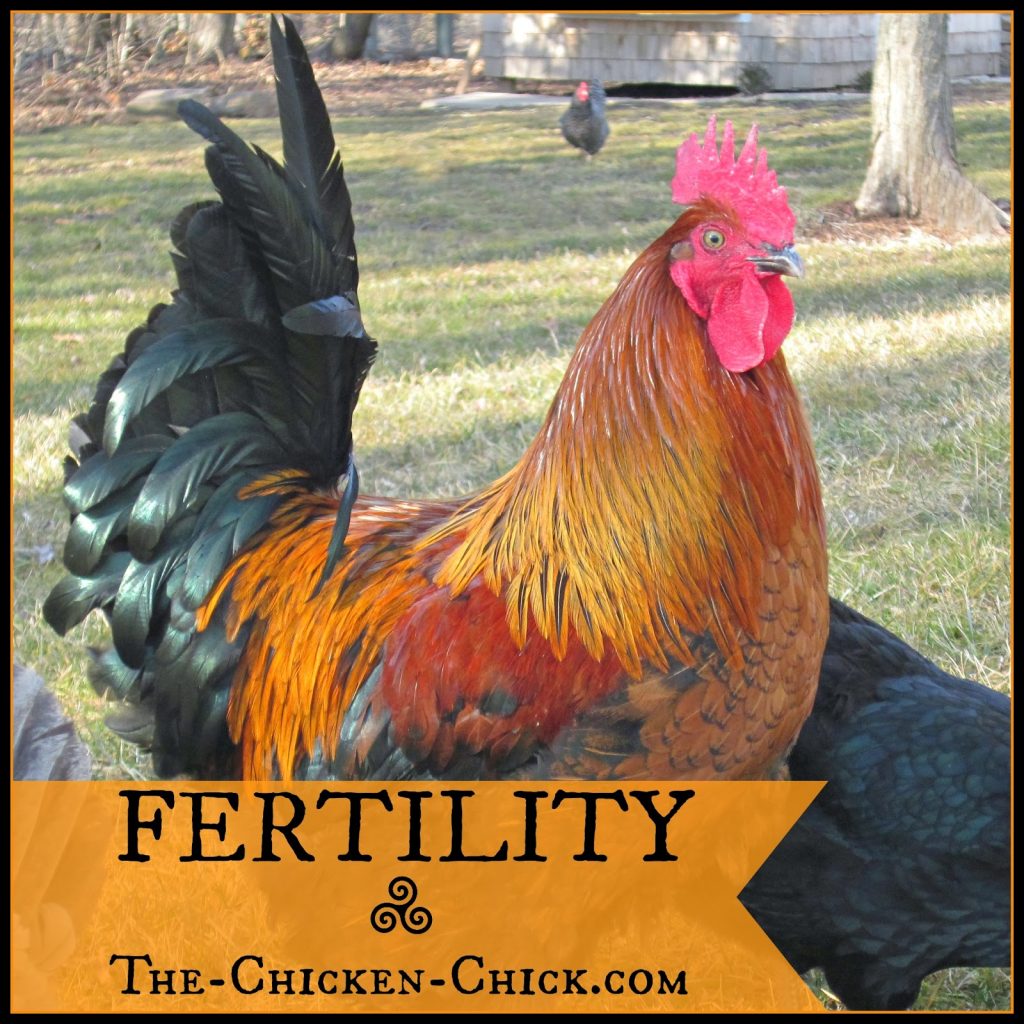
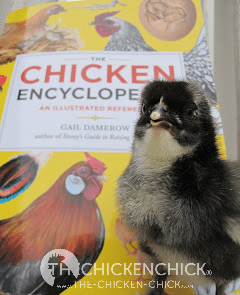
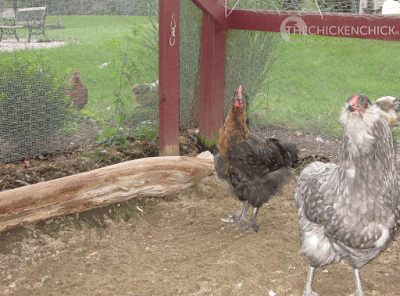
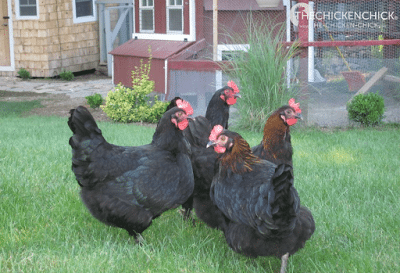
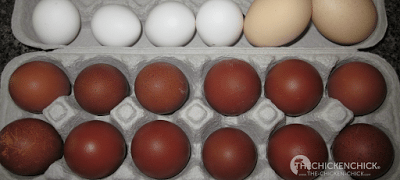
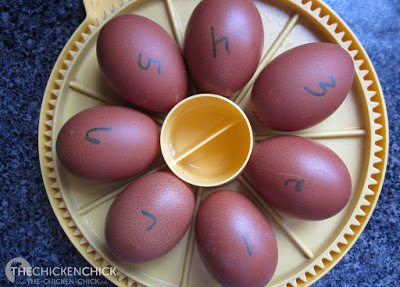


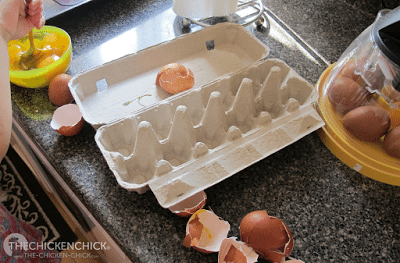
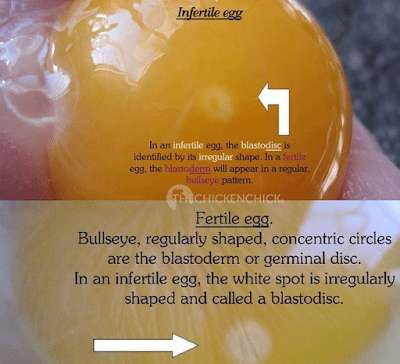
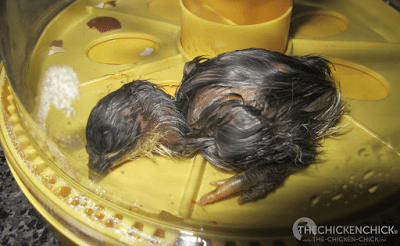
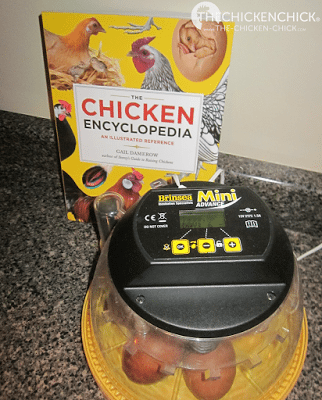

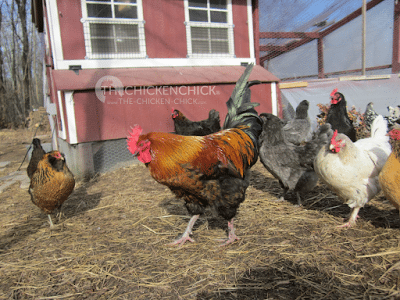
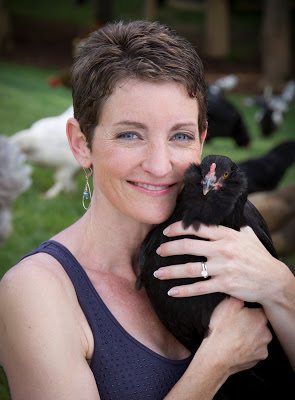






















I have a hankering to add black copper marans or penedesenca chickens to my flock because I have no dark brown egg layers. I just hatched a lavender Orpington rooster chick in my incubator in Feb. I would love to add more of his kind to my flock, too. I really enjoy your log and Facebook page, too!
Eleanor eefarlow@gmail.com
I would love to have a copy of the book. My chicks are 2 weeks old now.
Hi, I am a fan of your FB page & really enjoying your posts! Please enter me to win :^)
I would love to add some Blue Laced Red Wyandottes to our mixed flock. I have become intrigued with blue/grey/lavender birds. My other wish list chicken is the Cream Legbar, they lay blue eggs & are auto sexed at hatch. But just so far out of my price range!
Thanks for running so many fun drawings & contests!
Sally Mason-Kennedy
I have always wanted silkies, but have never been able to afford the cost of ordering them with the shipping and handling for either the little chicks or the fertile eggs. I am over 55 and money is very tight… I have Rhode Island Reds, Barred Rocks and they do not go broody as a general rule…would love some silkies, a rooster and some females–so I can have some broody hens to sit!! Have an empty incubator hoping to fill it once again this year with some more eggs…I would also love some Polish Hens–love them so much. And a… Read more »
Enter me!!! Would love to add some new blood to our flock as we have quite a few hens who are too old to lay anymore and we all love watching chicks grow and come into their full feather and beauty. Hmmm, what breed would I like to add to our flock?? I have always wanted a couple Jersey Giants, but then again some Dark Brahma's would be awesome too! I remember having a Dorking rooster for a short time years ago but as we didn't have a hen to match we had to give him away. My family has… Read more »